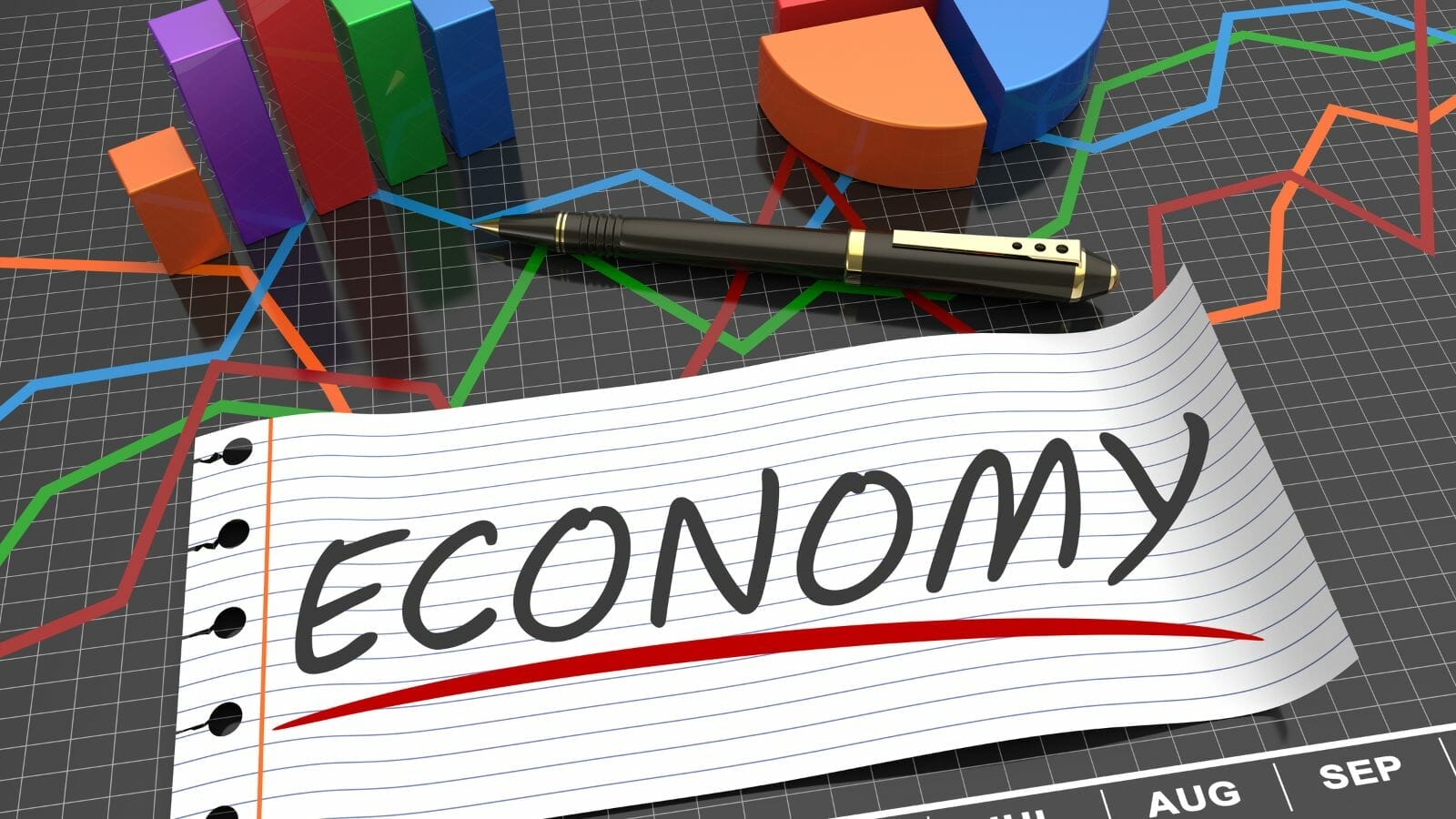“A company creates value when the present value of the cash flows from its investments are greater than the cost of the investments.
In other words, one dollar invested in the business becomes worth more than one dollar in the market. Discounting future cash flows makes sure the investment is attractive relative to the capital’s opportunity cost, the return on the next best alternative.”
In corporate finance, there exists a powerful metric that goes beyond the surface-level profitability of a company, aiming to measure the true value it generates for its shareholders.
Economic Value Added (EVA) is an insightful tool that delves into the wealth-creation potential of businesses.
In today’s blog post, we will attempt to understand the concept of EVA and explore how it provides a comprehensive assessment of a company’s financial performance.
We all search for a magic bullet in investing; unfortunately, no one exists. But EVA can help us find value-creating businesses with long-term potential.
In today’s post, we will learn:
- What is Economic Value Added?
- What is the Formula for Economic Value Added?
- Examples of Economic Value Added with Real Companies
- The Impacts of Economic Value Added
- Plusses and Minuses of Economic Value Added
Okay, let’s dive in and learn more about Economic Value Added.
What is Economic Value Added?
Economic Value Added, or EVA, represents a financial metric that investors can use to measure how well a company creates value for shareholders.

The metric revolves around the idea that profitability for Microsoft occurs when the company creates additional value for shareholders. Any projects or plans Microsoft executes create returns above the cost of capital.
You can also think of it as surplus value or residual value.
We measure the value in dollar terms, not percentages.
When we value companies, the value equals the current assets in place plus any value from future growth of the assets. EVA helps us measure any potential growth.
For example, Microsoft announced plans to spend an additional $5 billion on R&D to improve its AI capabilities. We can then measure the investment’s impact on revenue growth or profitability.
EVA is not an accounting metric; it is a metric we can use to measure economic profit, which relates to the cost associated with investments.
For example, analysts don’t deduct the cost of capital when calculating the earnings per share of Microsoft.
Some may confuse EVA with return on investment.
Here is the difference between the two…
Economic Value Added (EVA) measures how effectively a company uses its assets to generate income. Return on Investment (ROI) calculates the return from an investment as a percentage of the original amount invested.
EVA is calculated by deducting the cost of capital from operating profit, adjusted for taxes on a cash basis. We calculate ROI by dividing profit by capital.
What is the Formula for Economic Value Added?
We calculate EVA using the following formula:
EVA = NOPAT – (WACC * Invested Capital)

The inputs equal:
- NOPAT = Net Operating Profit after Taxes
- WACC = Weighted Average Cost of Capital
- Invested Capital = Denominator of the ROIC metric
As we can see, to calculate EVA, we must assume you, the reader, understand ROIC and WACC and the relationship between the two.
Note that we will simplify these calculations today for brevity, but I will include links to more detailed posts outlining each of these calculations.
Let’s unpack NOPAT first; it’s the easiest.
Calculating NOPAT (Net Operating Profit after Taxes)
To calculate NOPAT, we find the operating profit or EBIT on the income statement, and then we also determine the tax rate, using the income tax expense divided by the operating profit or EBIT.
The formula for NOPAT is as follows:
NOPAT = EBIT * ( 1- tax rate)
For example, Microsoft reported the following numbers in June 2022:
- Operating Income = $83,383 million
- Income tax expense = $10,978 million
So, calculating the tax rate:
Tax rate = $10,978 / $83,383 = 13.1%
Now, we can plug the above into our NOPAT, which gives us:
NOPAT = $83,383 * ( 1- 13.1%) = $72,459
Calculating WACC (Weighted Average Cost of Capital)
The formula for WACC is a bit more complicated, and we won’t go into depth here but refer to the link above to refresh your knowledge or learn more.
The formula for WACC equals:
WACC = Ke*E / (E+D) Kd (1-t)*D/ (E+D)
Where:
Ke = Cost of equity
Kd = Cost of debt
E = Market cap
D = Total debt
t = taxes
The WACC formula takes the two parts of financing for a business, equity, and debt, determines a cost for those, and then measures the weight of each. Typically, the cost of equity is much higher than debt because the risk of investing in equities or stocks remains far higher than debt or bonds.
The formula can look scary but becomes less imposing once you follow the links and learn each part.
Inputs for Microsoft are as follows:
- Ke = 9.27%
- Kd = 3.45%
- E = $2,547,844 million
- D = $47,032 million
- t = 13.1%
Plugging all of that into the WACC formula gives us a value of 9.15%.
The above calculation shows the number of investments or projects the company must overcome to generate shareholder value. For example, if the return on investment comes in at 8%, then Microsoft is destroying shareholder value. And vice versa, if it is 13%, then the company creates value.
Calculating Invested Capital
To calculate invested capital, we have two sides to choose from. We can use the asset side or the financing side. Again, please refer to the above links to refresh your knowledge or learn more.
The asset side includes accounts receivable, goodwill, accounts payable, and more. These assets help drive revenues for Microsoft, and we must balance them against the liabilities the company owes.
The other choice is to look at the financing side or the combination of debt and equity. We can choose this side because it offers a glimpse into the financing of the assets to generate growth.
Microsoft can choose to acquire assets using internal financing (free cash flow) or a combination of debt and equity.
If we build from the asset side for Microsoft, we arrive at a value of $160,867 million and the same number from the financing side. They must balance, ergo the term “balance sheet.”
Remember that NOPAT is the numerator of the ROIC formula, and Invested Capital is the denominator. Those relationships help explain the correlation to WACC or the discount rates used to value companies.
A company must reinvest (ROIC) and a great value than the discount rate (WACC) to grow in value.
Now, let’s put it all together.
EVA = NOPAT – (WACC*Invested Capital)
Our inputs from the above:
- NOPAT = $72,459
- WACC = 9.15%
- Invested Capital = $160,867
Microsoft EVA = 72,459 – (9.15% * 160,867) = $57,739
The above exercise shows that Microsoft generated $57,739 million in shareholder value in 2022 from its investments or use of invested capital.
Obviously, the higher the number, the better.
Examples of Economic Value Added with Real Companies
Let’s create a chart and map EVAs for some of the more popular companies in the S&P 500.

Apple | Amazon | Nvidia | Meta | ||
Invested Capital | 154,187 | 50,774 | 237,256 | 22,450 | 113,129 |
WACC | 9.20% | 10.2% | 9.93% | 12.65% | 10% |
NOPAT | 72,163 | 112,304 | 13,353 | 4,496 | 27,648 |
EVA | 57,978 | 107,125 | -10,207 | 1,656 | 16,335 |
As we can see, the top companies in the S&P 500 all generate economic value added, except for Amazon, which makes sense because Amazon is adjusting its physical capital allocation. They purchased too much floor space during the pandemic anticipating more demand, which didn’t materialize.
Let’s look at the evolution of the economic value for Google assuming the same WACC during the past five years.
2019 | 2020 | 2021 | 2022 | TTM | |
NOPAT | 31,139 | 34,525 | 65,962 | 62,927 | 72,163 |
WACC | 9.2% | 9.2% | 9.2% | 9.2% | 9.2% |
Invested Capital | 99,134 | 107,079 | 128,005 | 154,187 | 154,187 |
EVA | 22,019 | 24,674 | 53,916 | 48,742 | 57,978 |
By doing this extended exercise, we can see that Google has grown its EVA over the years while providing additional shareholder value.
The Impacts of Economic Value Added
Economic Value Added (EVA) has several impacts on a company and its stakeholders:

1. Shareholder Value: EVA links directly to shareholder value. Positive EVA indicates that a company generates returns that exceed the cost of capital, thereby increasing shareholder wealth. It helps investors evaluate a company’s ability to create value and make informed investment decisions.
2. Performance Evaluation: EVA comprehensively measures a company’s financial performance. It enables management to assess the effectiveness of their strategic decisions, capital allocation, and operational efficiency. Companies strive to enhance their overall performance by focusing on generating positive EVA.
3. Incentivizing Management: Management can use EVA as a performance metric for managerial incentives and compensation. Aligning executive compensation with EVA encourages management to make decisions that enhance shareholder value, fostering a more shareholder-oriented approach.
4. Capital Budgeting: EVA guides capital budgeting decisions by considering the cost of capital. Companies can prioritize projects or investments with positive EVA to create. EVA analysis helps companies allocate resources efficiently and maximize their return on invested capital.
5. Strategic Planning: EVA aids in strategic planning by highlighting business areas that generate or destroy value. It helps identify areas for improvement, cost reduction, and revenue optimization, enabling companies to refine their strategies and allocate resources effectively.
6. External Perception: Investors, creditors, and analysts may view companies with consistently positive EVA favorably. Positive EVA indicates a company’s ability to generate profits above and beyond its cost of capital, enhancing its reputation and attracting potential investors or partners.
7. Mergers and Acquisitions: EVA can be useful in evaluating potential mergers, acquisitions, or divestitures. It provides insights into the value that can be added or destroyed through such transactions, helping companies make informed decisions regarding growth or restructuring opportunities.
By considering the impacts of EVA, companies can strategically leverage this metric to enhance shareholder value, drive performance improvements, and make informed decisions that optimize their financial outcomes.
Plusses and Minuses of Economic Value Added
Below are some of the upsides and downsides of using the EVA metric.

Plusses of EVA:
1. Holistic Performance Measure: EVA provides a comprehensive view of a company’s financial performance, considering both profitability and the cost of capital. It considers the true economic value created by a company’s operations, providing a more accurate assessment of its performance.
2. Alignment with Shareholder Value: EVA directly links to shareholder value creation. It focuses on generating returns that exceed the cost of capital, aligning the interests of management and shareholders. This incentivizes management to make decisions that enhance shareholder wealth.
3. Capital Allocation Optimization: EVA helps optimize capital allocation decisions by considering the cost of capital. It guides companies in prioritizing value-creating projects and investments, ensuring efficient utilization of resources, and maximizing return on invested capital.
4. Performance Benchmarking: EVA enables companies to compare their financial performance against competitors or industry benchmarks. This allows for a more meaningful evaluation of their relative value creation and helps identify areas for improvement.
Minuses of EVA:
1. Complexity: EVA involves several calculations and requires access to detailed financial data. Implementing EVA can be complex and time-consuming, especially for companies with multiple divisions or complex organizational structures.
2. Subjectivity in Calculations: The calculation of EVA involves estimating the cost of capital, which can be subjective and open to interpretation. Different assumptions can lead to varying results, making achieving absolute precision in the EVA calculation challenging.
3. Short-Term Focus: EVA primarily measures the economic value created in the short term. It may not capture the long-term value creation potential or account for intangible assets such as brand value, intellectual property, or research and development efforts.
4. Potential Manipulation: EVA can be manipulated to create favorable results like any financial metric. Companies may use short-term tactics or accounting adjustments to artificially inflate EVA figures, undermining the true performance assessment.
5. Lack of Universal Standard: There is no universal standard for calculating EVA, leading to variations in methodologies and approaches. This can make comparing EVA figures across companies or industries challenging, limiting its usefulness as a standardized performance metric.
While EVA offers valuable insights into a company’s financial performance and value creation, it is important to consider these plusses and minuses when applying and interpreting EVA as a performance evaluation tool.
Investor Takeaway
Understanding the relationship between investment and growth is important for investors. When we understand the relationship and how each part interacts, we can better determine a company’s future value.
After all, the future value of present cash flows helps determine a company’s future value.
The EVA metric can help us see the connection between the efficiency of investments, ROIC, and the cost associated with those investments, WACC.
Every company needs to reinvest to grow, even Apple, and the more efficient those investments when compared to the cost, the more shareholder value the company will create.
Some of the greatest long-term investments have come from Costco, Apple, Coke, American Express, and Johnson & Johnson. These businesses have all created wealth by investing efficiently above their costs of capital.
And with that, we will wrap up today’s discussion on economic value added.
Thank you for reading today’s post, and I hope you find something of value. If I can further assist, please don’t hesitate to reach out.
Until next time, take care and be safe out there,
Dave
Related posts:
- Evaluating Management with a Simple Checklist for Investors “When a management with a reputation for brilliance tackles a business with a reputation for bad economics, it is the reputation of the business that...
- What is a Def14A Statement and Why is it Important for Investors? Updated 12/12/2023 Did you know that Warren Buffett made $380,000 in 2020, of which $100,000 was his salary, and the balance was security protection for...
- A Deep Dive into the Inner Workings of Compounding Machines: Understanding Their Competitive Advantage A Deep Dive into the Inner Workings of Compounding Machines: Understanding Their Competitive Advantage As an investor, you always seek ways to maximize your returns...
- Breakdown of Warren Buffett’s Valuation of Coca Cola in 1988 “I never buy anything unless I can fill out on a piece of paper my reasons. I may be wrong, but I would know the...
